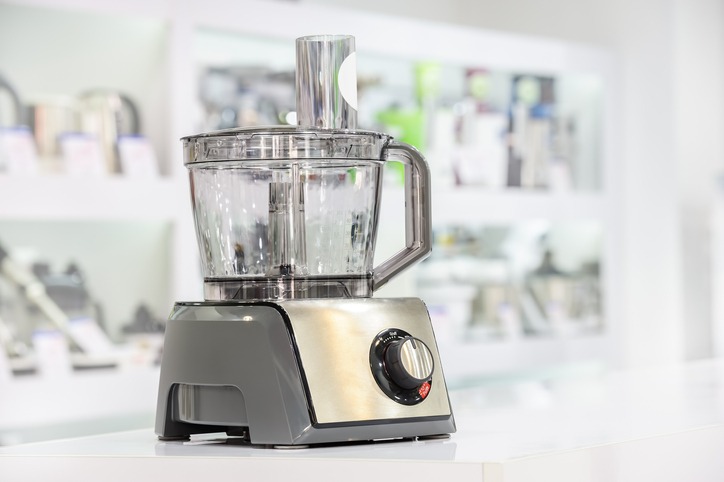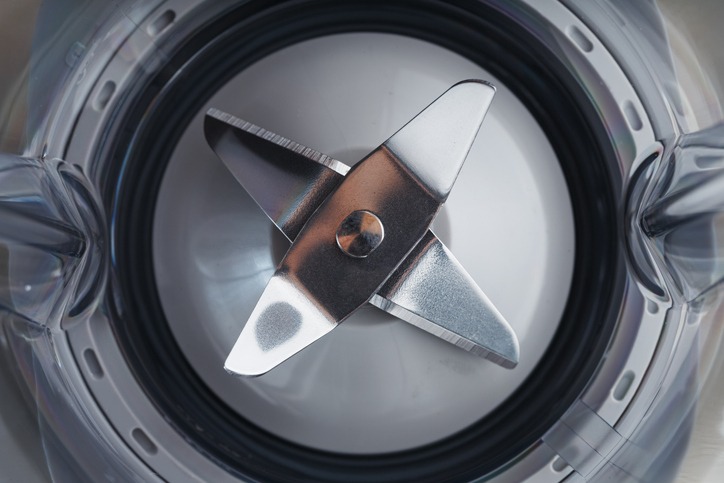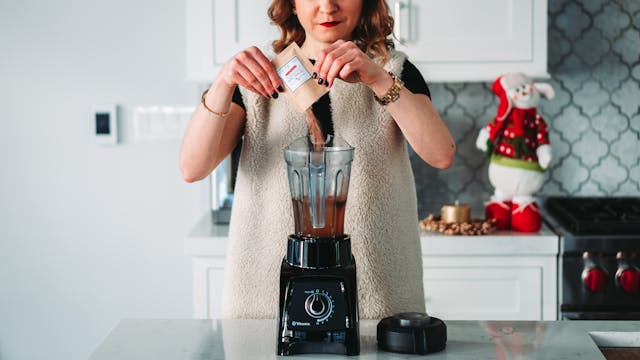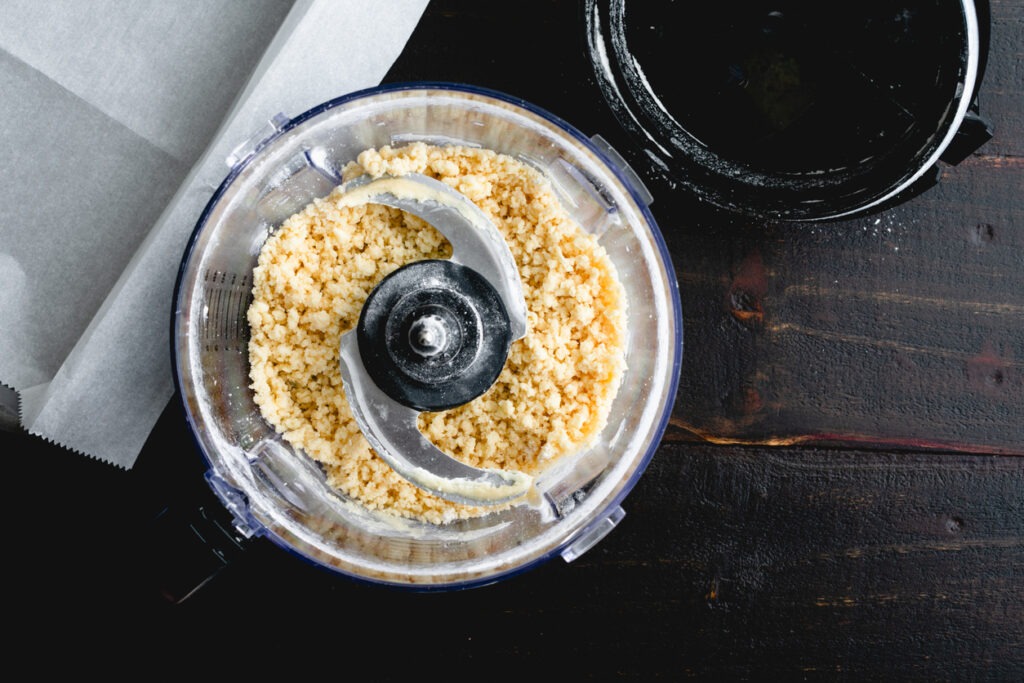Imagine you’re hosting a dinner party and you’ve decided to make a creamy tomato soup and a fresh, homemade pizza dough. You’re faced with a decision: should you reach for your blender or food processor?
This isn’t just about choosing a kitchen appliance; it’s about understanding the unique strengths and limitations of each tool to enhance your culinary creations. While blenders excel in liquefying and emulsifying, making them the go-to for smooth soups and frozen cocktails, food processors shine when it comes to chopping, slicing, and dough kneading.
Consider what’s on your menu and you’ll start to see which appliance might be your best ally. However, the decision isn’t always clear-cut, as the nuances in their capabilities can offer unexpected benefits for various recipes.
Understanding Blenders
Blenders, with their fixed blades and tall jars, are designed to efficiently blend liquids into smooth concoctions like smoothies and soups. When you’re whipping up a batch of your favorite fruit blend or a creamy sauce, a blender is your go-to appliance. Its single blade and tall jar structure aren’t just for show; they play a crucial role in ensuring your ingredients are thoroughly mixed to achieve consistent results every time.
What makes blenders stand out is their ability to create a powerful vortex. This swirling motion pulls ingredients down towards the blades, ensuring everything from frozen berries to leafy greens is pulverized quickly and smoothly. You’ll find that tasks like crushing ice or making frothed milk, which demand a certain finesse and power, are a breeze with your blender.
Moreover, blenders excel in preparing a variety of recipes. Whether it’s silky purees, nut milks, frozen drinks, or just a simple morning smoothie, the blender’s design is optimized for liquids and soft ingredients. The combination of fixed blades and the vortex they create guarantees that your concoctions aren’t just blended, but perfectly smooth and ready to enjoy.
Understanding Food Processors
Now, let’s turn our attention to food processors, your go-to tool for making meal prep a breeze. You’ll find they’re not just versatile in the kitchen; they also come with handy maintenance tips to keep them running smoothly. From whipping up dough to slicing veggies, food processors prove to be indispensable for a variety of tasks.
Food Processor Functions
Food processors, with their interchangeable sharp blades, are designed to efficiently chop, slice, shred, and puree a variety of ingredients, making them a versatile tool for any culinary task. Unlike blenders, which are better suited for liquid-based recipes, food processors excel at more solid tasks. They come equipped with attachments like slicing and grating discs, enabling you to tackle a wide range of food preparation chores with ease.
Whether you’re making dough, sauces, dips, or nut butters, a food processor can handle it. They even slice vegetables with unmatched precision. With options ranging from mini to large, there’s a food processor size that’s just right for your recipe quantity and cooking needs.
Plus, some advanced models can dice, spiralize, and juice, broadening their utility in the kitchen without stepping into the versatility territory.
Versatility in Kitchens
Understanding food processors reveals their unmatched versatility in kitchens, as they effortlessly tackle a myriad of prep tasks from chopping to kneading. Unlike blenders, which excel in blending liquids, food processors are your go-to kitchen appliances for more solid tasks. They’re not just versatile; they redefine convenience.
| Task | Food Processor | Blender |
|---|---|---|
| Chopping | ✅ | ❌ |
| Kneading | ✅ | ❌ |
| Blending | ✅ | ✅ |
With various blade attachments, you can slice, shred, grate, and mix ingredients with precision and consistency. They’re ideal for both wet and dry ingredients, making them essential for all kinds of cooking and baking tasks. You’ll save time and effort, preparing large batches efficiently. It’s clear, when it comes to versatility in the kitchen, food processors are unmatched.
Processor Maintenance Tips
To keep your food processor running smoothly, it’s crucial to follow these maintenance tips. Unlike a blender, which may have simpler components, a food processor has various attachments that all require attention to ensure peak performance. Here are three key tips to keep in mind:
- Regularly clean all parts of your food processor, including the base, bowl, blades, and lid, to prevent residue buildup and maintain cleanliness.
- Avoid overfilling the bowl to maintain optimal performance and prevent strain on the motor, ensuring your food processor lasts longer.
- Use the pulse function for harder or larger ingredients to avoid overheating the motor, protecting it from potential damage.
Key Differences Explained
Often, deciding between a blender and a food processor comes down to understanding their key differences, which are crucial for optimizing kitchen tasks. When you’re comparing Food Processor vs Blender: What’s better for your kitchen, it’s essential to know where each excels. Blenders and food processors might look similar, but they serve distinct purposes. Blenders are best used for creating smooth, liquid recipes like smoothies and soups. Their design is perfect for liquids, with a tall jar and a fixed blade that creates a vortex, pulling ingredients downwards for a silky blend. On the other hand, food processors come with multiple blades and are champions at more solid tasks such as shredding cheese, slicing vegetables, and kneading dough.
| Feature | Blender | Food Processor |
|---|---|---|
| Ideal for | Liquid recipes | Chopping, shredding |
| Blades | One fixed blade | Multiple blades/dics |
| Tasks | Crushing ice, smoothies | Slicing, kneading dough |
Understanding these distinctions ensures you’re not just blindly choosing between them but making an informed decision based on your culinary needs.
Blade Design and Function
Exploring the blade design and function of blenders and food processors sheds light on their distinct culinary roles. While both are indispensable kitchen tools, understanding the differences between their blades can help you decide which one is right for your cooking needs.
Blenders are equipped with fixed blades that create a powerful vortex, pulling ingredients downwards. This design is perfect for blending liquids and achieving that silky smooth texture in smoothies and soups. On the other hand, food processors come with an array of discs and blades that can be swapped out depending on the task. Whether you’re chopping, slicing, or pureeing solid ingredients, a processor’s versatility is unmatched.
Consider these key points:
- Blenders’ fixed blades are ideal for creating smooth, liquid mixtures.
- Food processors’ interchangeable discs and blades offer flexibility to chop, slice, shred, and even knead dough.
- The choice between a blender and a processor depends on your culinary needs, from creating silky smooth drinks to handling various textures and consistencies in ingredients.
Capacity and Size Matters
When you’re deciding between a blender and a food processor, it’s crucial to consider how much you’ll be processing and the space you have available. Blenders are great for small, quick tasks with their compact size, but if you’re looking to handle larger batches, a food processor’s capacity and efficiency can’t be beaten.
Think about what you’ll be making most often to determine which appliance best fits your kitchen and cooking style.
Comparing Volume Differences
Understanding the volume differences between blenders and food processors is crucial, as it directly influences their suitability for various cooking tasks. Blenders typically offer a smaller capacity, ideal for personal uses such as smoothies, while food processors boast larger capacities, perfect for batch cooking or family meals.
- Blenders: Ranging from 40 to 80 ounces, perfect for single or double servings.
- Food Processors: Starting at 7 cups up to 14 cups, designed for larger batches and meal prep.
- Size Difference: Blenders are taller and more slender, whereas food processors are wider and shorter.
Given these differences in volume, food processors are your go-to for bigger tasks, while blenders shine in quick, small-scale preparations.
Suitability for Kitchen Space
In choosing between a blender and a food processor, it’s crucial to consider how each fits into your kitchen’s available space, given their differing capacities and sizes.
Blenders, with their taller and slimmer design, require more vertical space but are generally easier to store. On the other hand, food processors demand more counter space due to their wider body. They also come with larger work bowls, which along with their accessories, like slicing discs and shredding blades, may require additional storage space.
Before making a decision, think about your kitchen layout, including the available countertop and storage space. This ensures the appliance you choose comfortably fits into your kitchen without cluttering it. Remember, the right fit for your kitchen aids in maintaining a tidy and functional cooking environment.
Batch Processing Efficiency
Considering batch processing efficiency, food processors outshine blenders due to their larger capacity and size, allowing for fewer rounds of processing. Food processors boast capacities ranging from 7 to 14 cups, while blenders typically offer 40 to 72 ounces. This difference means you’re likely to get more done in less time with a food processor, especially when working with large quantities.
- Larger Capacities: Food processors handle more ingredients, reducing the need for multiple batches.
- Wider Work Bowls: Their design accommodates larger quantities, enhancing efficiency.
- Size Matters: The overall size of food processors aids in processing bigger batches at once, streamlining your kitchen tasks.
Whether you’re prepping for a party or making weeknight meals, food processors’ capacity and size make them the go-to for batch processing efficiency.
Versatility in the Kitchen
When deciding between a blender and a food processor, consider how their unique capabilities can enhance your culinary creations and make kitchen tasks more efficient. Blenders shine when you’re aiming for smooth, creamy textures. They’re not just for smoothies; they’re your go-to for soups, sauces, and purees that require a silky finish. This versatility ensures that whether you’re concocting a beverage or a base for your next meal, you’ve got the right tool to achieve the perfect consistency.
On the other hand, food processors stand out in their ability to handle a variety of solid food prep tasks with ease. They’re champions at slicing, shredding, and even kneading dough, which can significantly cut down your prep time. Their prowess in chopping and grating makes them indispensable for recipes that require fine or coarse cuts, enhancing efficiency in your kitchen workflow.
Both tools have their unique strengths, making them essential for different culinary tasks. The choice between a blender and a food processor depends on what versatility means to you in the kitchen and the types of tasks you prioritize for efficiency and ease.
Ideal Uses for Blenders
Blenders excel at transforming ingredients into silky smoothies, creamy soups, and more, making them a must-have for anyone looking to create liquid-based culinary delights. Their ability to blend ingredients to a velvety consistency makes them indispensable in the kitchen. When you’re aiming for super smooth results, the blender blades are your best bet, especially when working with small batches.
Consider blenders for these specific tasks:
- Crushing Ice and Frozen Fruits: High-powered blenders can crush ice and frozen fruits quickly, making them perfect for frozen drinks and smoothies.
- Making Nut Milks and Butters: If you’re into dairy-free options, blenders can help you whip up nut milks and butters with a smooth finish.
- Creating Creamy Soups and Sauces: For soups and sauces that require a consistent texture, blenders are the way to go. They can puree hot soups directly in the pitcher, saving you time and effort.
Ideal Uses for Food Processors
While blenders are your go-to for smooth textures, food processors shine in tasks requiring precise chopping and dough mixing. When deciding whether a blender or food processor is best for your kitchen, consider what you’re looking to achieve with these appliances.
Food processors are your best ally when you need to chop garlic, onions, nuts, and vegetables quickly and efficiently. Thanks to their removable set of sharp, s-shaped blades, they excel in creating finely chopped ingredients perfect for a variety of recipes.
Moreover, food processors aren’t limited to just chopping. They’re incredibly versatile, allowing you to shred and sometimes dice, making meal prep a breeze. Need to add ingredients for a pie crust or bread dough? A food processor can mix these with ease, eliminating the need for manual kneading. They also come equipped with slicing and shredding discs, enhancing their utility in your kitchen.
Whether you’re making purees, dips, sauces, or preparing vegetables, a food processor offers clear bowls for visibility, ensuring you get the texture and consistency you desire. Some models even expand their use further, enabling you to dice, spiralize, and juice, proving that when it comes to versatile kitchen tasks, food processors are an invaluable tool.
Making the Right Choice
Deciding between a blender and a food processor depends largely on the types of dishes you frequently prepare and your kitchen’s specific needs. If you’re a smoothie enthusiast or love making soups, a blender’s ability to create silky textures and crush ice makes it your go-to appliance. On the other hand, if your culinary experiments often involve chopping, shredding, or kneading dough, a food processor’s versatility is unbeatable.
To make the right choice, consider these key points:
- Type of Recipes: Blenders shine with liquid-based recipes, while food processors are champions of tasks like slicing and dough making.
- Kitchen Space: Evaluate your available counter space to decide if one or both appliances fit.
- Attachments and Features: Look for specific attachments that match your cooking style, ensuring the appliance you choose enhances your food preparation experience.
Conclusion
So, what’s better for your kitchen, a blender or a food processor? It really boils down to what you’re whipping up. Blenders are your go-to for smooth, liquid creations like smoothies and soups. On the flip side, food processors shine when you’re slicing, dicing, or kneading. Each has its own strengths, so consider your cooking habits.
Want to cover all your bases? Having both ensures you’re prepared for any recipe that comes your way.






